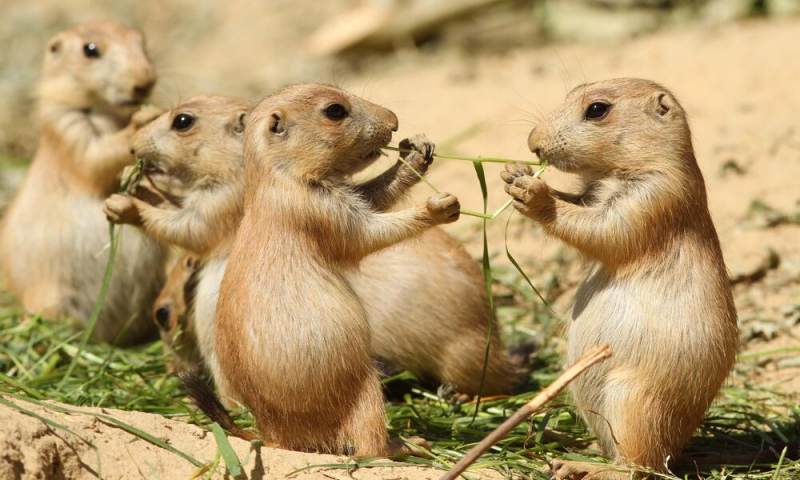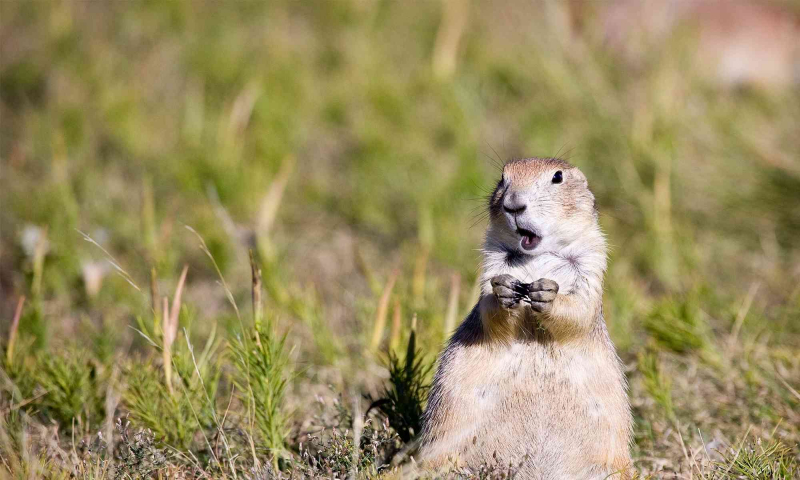Prairie Dog
Prairie dogs (genus Cynomys) are herbivorous burrowing mammals native to the grasslands of North America. Because other species frequently use their mounds, prairie dogs are regarded as keystone species. Their mound-building supports grass growth and topsoil renewal, which is important for soil quality and agriculture. It also replenishes the soil with rich minerals and nutrients. Other species also use prairie dog tunnels as a place to nest, including the mountain plover, the burrowing owl, and the golden-mantled ground squirrel. Prairie dogs frequently graze on the same terrain as grazing animals including pronghorns, mule deer, and plains bison.
The prairie dogs who dwell in the burrows are able to stay warm in the winter and cool in the summer because of the way the burrows are constructed. They can be up to 33 feet long and nearly 10 feet deep, have efficient ventilation and prevent flooding in the tunnels and chambers. The burrow can have up to six entrances and contain chambers for babies, nighttime sleeping, wintertime refuge, and hiding from or even listening for predators.












